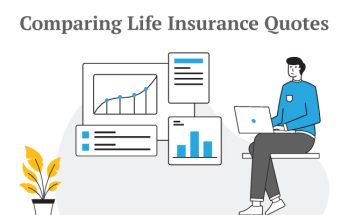Auto insurance is essential because it helps protect you and others on the road in case of an accident. However, finding affordable auto insurance can be challenging. This guide will help you understand how to find affordable auto insurance. We will explain everything in simple words so everyone can understand.
What is Auto Insurance?
Auto insurance is a type of insurance that covers damage to your car and injuries to you or others in an accident. It can also cover theft, vandalism, and other types of damage. Having auto insurance helps protect you financially if something goes wrong.
Key Features
- Liability Coverage: Pays for damage and injuries you cause to others in an accident.
- Collision Coverage: Pays for damage to your car if you hit another vehicle or object.
- Comprehensive Coverage: Pays for damage to your car from things like theft, fire, or natural disasters.
- Medical Payments Coverage: Pays for medical bills if you or your passengers are injured in an accident.
- Uninsured/Underinsured Motorist Coverage: Pays for damage and injuries if you are hit by a driver who does not have enough insurance.
Why is Auto Insurance Important?
Auto insurance is important for several reasons:
- Legal Requirement: In most places, you are required by law to have auto insurance.
- Financial Protection: Helps cover the costs of repairs, medical bills, and legal fees if you are in an accident.
- Peace of Mind: Knowing you are covered can help you feel more secure while driving.
- Protection Against Uninsured Drivers: Provides coverage if you are hit by a driver who does not have insurance.
Factors That Affect Auto Insurance Rates
Several factors can affect how much you pay for auto insurance:
1. Age
Younger drivers usually pay higher premiums because they are seen as higher risk.
2. Driving Record
Drivers with a clean driving record usually get lower rates because they are considered safer drivers.
3. Type of Car
The make, model, and year of your car can affect your insurance rates. Expensive or high-performance cars usually cost more to insure.
4. Location
Where you live can affect your rates. Areas with higher traffic or crime rates can be more expensive.
5. Coverage Amount
The amount of coverage you choose can affect your rates. Higher coverage limits usually mean higher premiums.
6. Credit Score
In some places, your credit score can affect your insurance rates. Higher credit scores usually mean lower premiums.
Tips for Finding Affordable Auto Insurance
Here are some tips to help you find affordable auto insurance:
1. Shop Around
Compare quotes from different insurance companies to find the best rate. Don’t settle for the first quote you receive.
Tips:
- Use online tools to compare quotes.
- Contact multiple insurance companies for quotes.
- Review the coverage options and prices.
2. Choose the Right Coverage
Select a policy that covers your needs without paying for unnecessary extras. For example, if you have an old car, you might not need comprehensive coverage.
Tips:
- Assess your needs and risks.
- Consider liability coverage if you have an older car.
- Avoid unnecessary add-ons.
3. Increase Your Deductible
Choosing a higher deductible can lower your premiums. Just make sure you can afford to pay the deductible if you need to file a claim.
Tips:
- Consider your financial situation.
- Choose a deductible amount you can comfortably pay.
- Balance the savings with the potential out-of-pocket cost.
4. Maintain a Good Driving Record
Driving safely and avoiding accidents and tickets can help keep your premiums low.
Tips:
- Follow traffic rules and speed limits.
- Avoid distractions while driving.
- Take a defensive driving course.
5. Bundle Policies
Some insurance companies offer discounts if you bundle multiple policies, like home and auto insurance, with the same company.
Tips:
- Ask your insurance company about bundling options.
- Compare the savings from bundling with separate policies.
- Ensure the coverage meets your needs.
6. Ask About Discounts
Ask your insurance company about available discounts. You might qualify for discounts for things like being a good student, having a good driving record, or installing safety features.
Tips:
- Inquire about all possible discounts.
- Provide proof of eligibility for discounts.
- Combine multiple discounts for more savings.
7. Improve Your Credit Score
In some places, your credit score can affect your insurance rates. Keeping a good credit score can help you get lower premiums.
Tips:
- Pay your bills on time.
- Keep your credit card balances low.
- Check your credit report regularly.
8. Choose a Safe Car
Cars with good safety features and ratings often qualify for lower premiums.
Tips:
- Choose a car with anti-lock brakes, airbags, and anti-theft devices.
- Research safety ratings before buying a car.
- Consider a vehicle with a high safety rating.
9. Drive Less
Some insurance companies offer discounts for low-mileage drivers. Driving less can help you save on insurance.
Tips:
- Carpool or use public transportation.
- Combine trips to reduce mileage.
- Consider a pay-per-mile insurance plan.
10. Review Your Coverage Regularly
Regularly review your auto insurance policy to make sure it still meets your needs. Adjust your coverage as your situation changes to avoid paying for unnecessary coverage.
Tips:
- Check your policy annually.
- Adjust coverage for new or sold vehicles.
- Remove coverage for items you no longer own.
How to Apply for Auto Insurance
Here are the steps to apply for auto insurance:
1. Gather Information
Collect details about your car, your driving history, and any other drivers in your household. You will need this information to get accurate quotes.
2. Compare Quotes
Contact insurance companies or use online tools to get quotes for different policies. Compare the costs and coverage options.
3. Choose a Policy
Select the policy that best meets your needs and budget. Make sure you understand the coverage and costs.
4. Fill Out an Application
Provide information about your car, your driving history, and any other drivers in your household. Be honest and thorough when completing the application.
5. Pay the Premium
Once your application is approved, you will need to pay the premium to activate your coverage. Set up a payment plan that works for you.
Common Questions About Auto Insurance
What is Liability Coverage?
Liability coverage helps pay for costs if you hurt someone or damage their property with your car. It is usually required by law.
What is Collision Coverage?
Collision coverage helps pay for repairs to your car if you hit another vehicle or object. It is optional but can be very helpful.
What is Comprehensive Coverage?
Comprehensive coverage helps pay for damage to your car from things like fire, theft, or natural disasters. It is also optional.
What is an Insurance Premium?
An insurance premium is the amount you pay for your auto insurance, usually monthly or yearly.
What is a Deductible?
A deductible is the amount you pay out of pocket before your insurance kicks in. Higher deductibles usually mean lower premiums.
What if I Can’t Afford My Premium?
If you can’t afford your premium, talk to your insurance company. They may be able to help you adjust your coverage or set up a payment plan.
Can I Change My Policy?
Yes, you can usually change your policy. This might include increasing your coverage, changing your deductible, or adding additional coverage.
Tips for Managing Your Auto Insurance
Here are some tips to help you manage your auto insurance:
Keep Records
Save copies of your policy, bills, and any communication with your insurance company. Keep track of your payments and any claims you file.
Review Your Coverage
Check your coverage regularly to make sure it still meets your needs. Consider adjusting your policy if your financial situation or goals change.
Update Your Policy
Inform your insurance company if you make any significant changes, like buying a new car or moving to a new location.
Ask Questions
If you don’t understand something about your policy, ask your insurance company or an insurance agent. Make sure you fully understand your coverage and costs.
Stay Informed
Keep up with changes in the insurance industry and adjust your coverage as needed. Stay informed about your policy and any new features or options that may become available.
Conclusion
Finding affordable auto insurance is possible with the right strategies. By shopping around, choosing the right coverage, increasing your deductible, maintaining a good driving record, bundling policies, asking about discounts, improving your credit score, choosing a safe car, driving less, and reviewing your coverage regularly, you can save money on your auto insurance. Remember to gather information, compare quotes, choose the right policy, and manage your auto insurance effectively. With the right information and guidance, you can get the best coverage for your needs at an affordable price.


